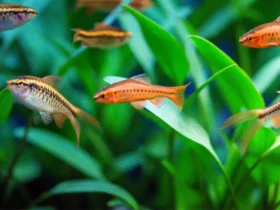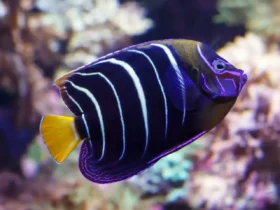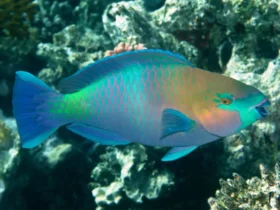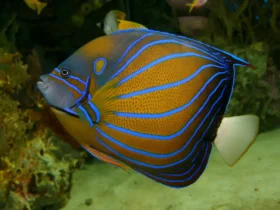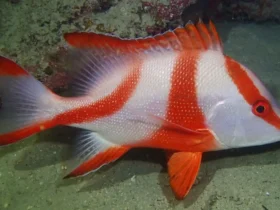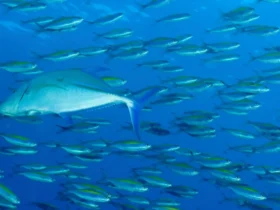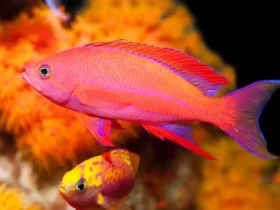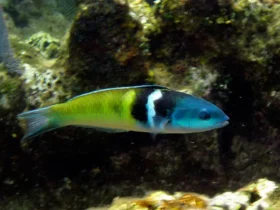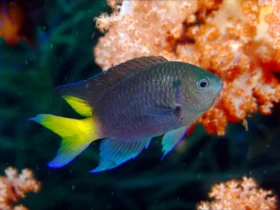The long-snouted seahorse is a beautiful wild marine creature that commonly lives in the northwest Atlantic Ocean. This species is currently on the list of those threatened with extinction due to human harvesting for various purposes.
General information about the long-snouted seahorse
The long-snouted seahorse, also known as the slender seahorse or Brazilian seahorse, is named after its long snout. Its body is flat and thick, with an average length of 15 to 20 cm and sometimes up to 30 cm.
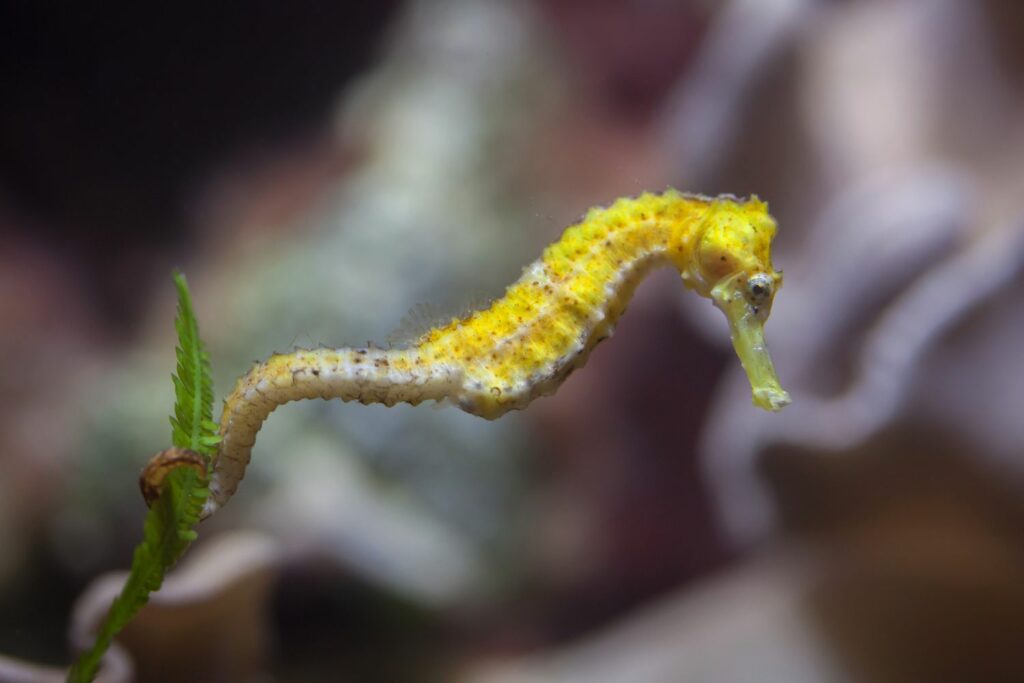
Coloration
The long-snouted seahorse comes in various colors such as black, yellow, orange-red, or brown. The skin of this species may be decorated with brown, white, or black spots. Sometimes, some individuals have a light-colored mane on their backs.
The long-snouted seahorse has the ability to change its color beautifully while swimming.
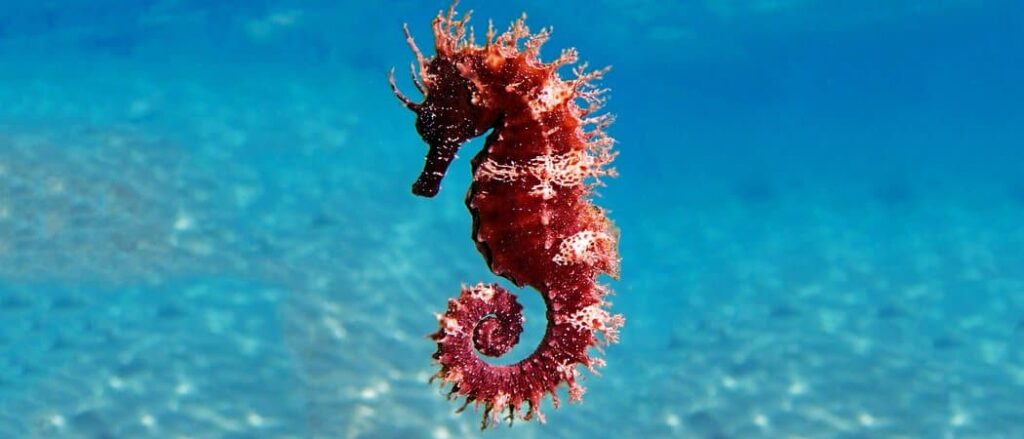
Structural characteristics
- The outstanding feature of the long-snouted seahorse is the low, spiral-shaped crown on the top of its head.
- Its head looks very much like that of a horse, with spikes running from head to tail.
- The seahorse’s snout is long and cylindrical, with a small and cute mouth and big, round eyes.
- Its back is adorned with large fins, and its belly is often swollen and without fins.
- The long-snouted seahorse has a long, round, and spiraling tail
- Its fins are small, both the pectoral and the anal fins.
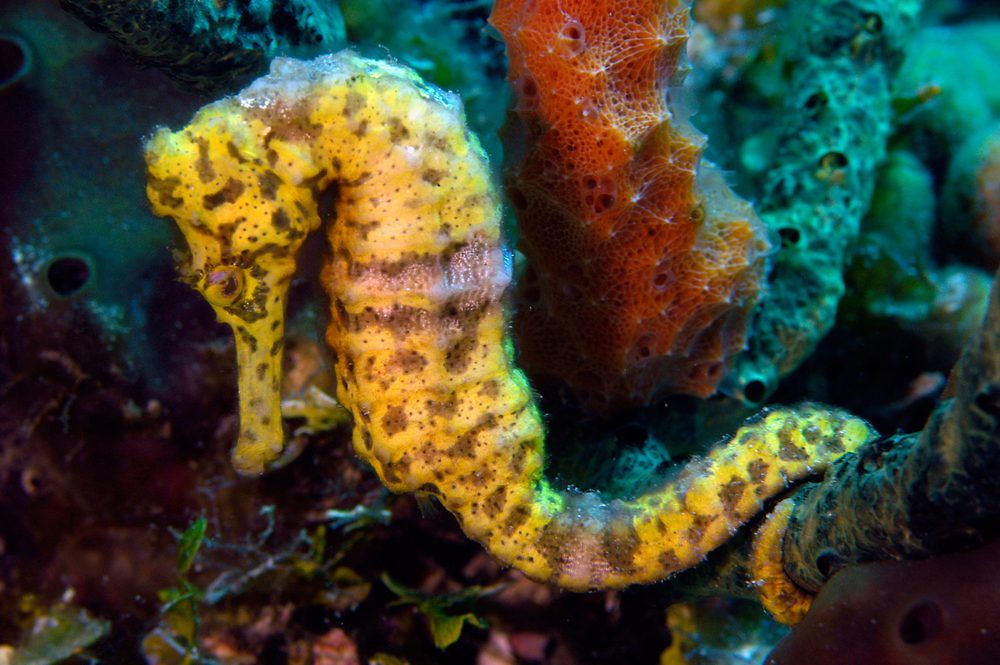
Lifespan
The lifespan of the long-snouted seahorse can range from 1 to 4 years. If they live in natural habitats with wide spaces, their lifespan can be longer.
What are the notable characteristics of long-snouted seahorse?
- The long-snouted seahorse is known for its poor swimming ability and slow movement in water, making them not inclined to migrate and preferring to stay in one place. They often rely on their camouflage layer, made up of sharp spines and bone plates covering most of their bodies, to avoid being preyed upon.
- Like other seahorse species, their tails are twisted forward and highly flexible. They use this tail to anchor onto seagrass, mangrove roots, foam, soft corals, or other places where they can hide and avoid being preyed upon.
- Their head is relatively large compared to their very small mouth, and their long snout allows them to concentrate enough pressure to easily suck prey into their mouth.
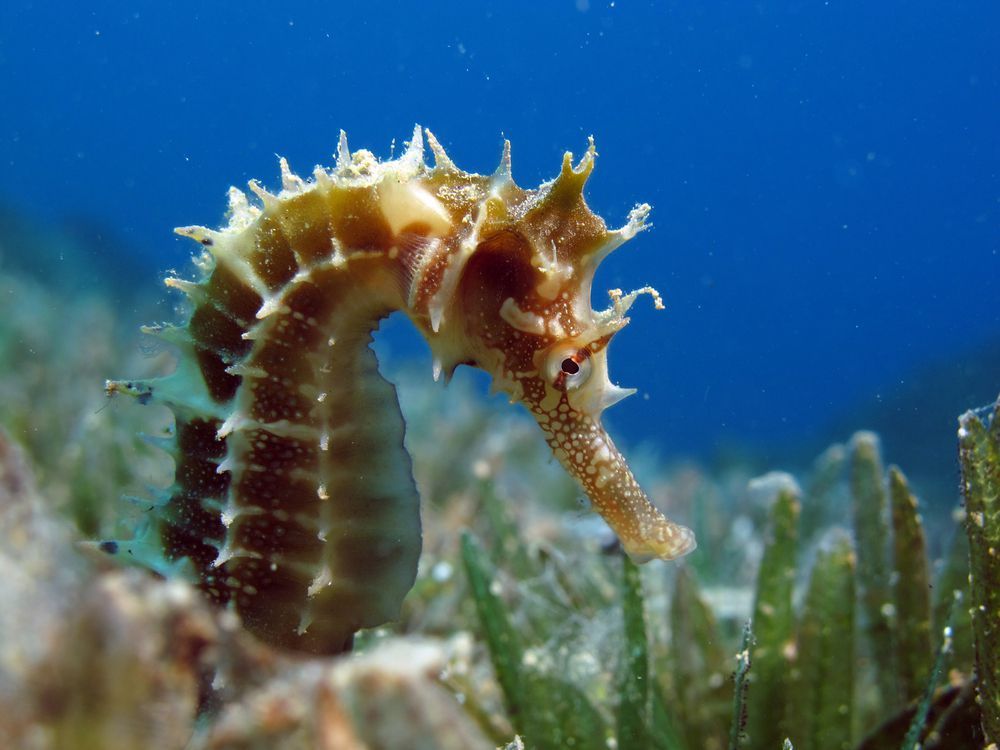
Where do long-snouted seahorses live and distribute?
Long-snouted seahorses are most commonly found in the northwest Atlantic Ocean. They are distributed along the coast from North Carolina to Brazil.
In addition, long-snouted seahorses can also be found in the Caribbean Sea and the waters of Bermuda.
Long-snouted seahorses are typically found in relatively shallow waters ranging from 1 to 55 meters deep in the ocean. They tend to prefer shallower water environments, and can also be found in both marine and brackish waters.
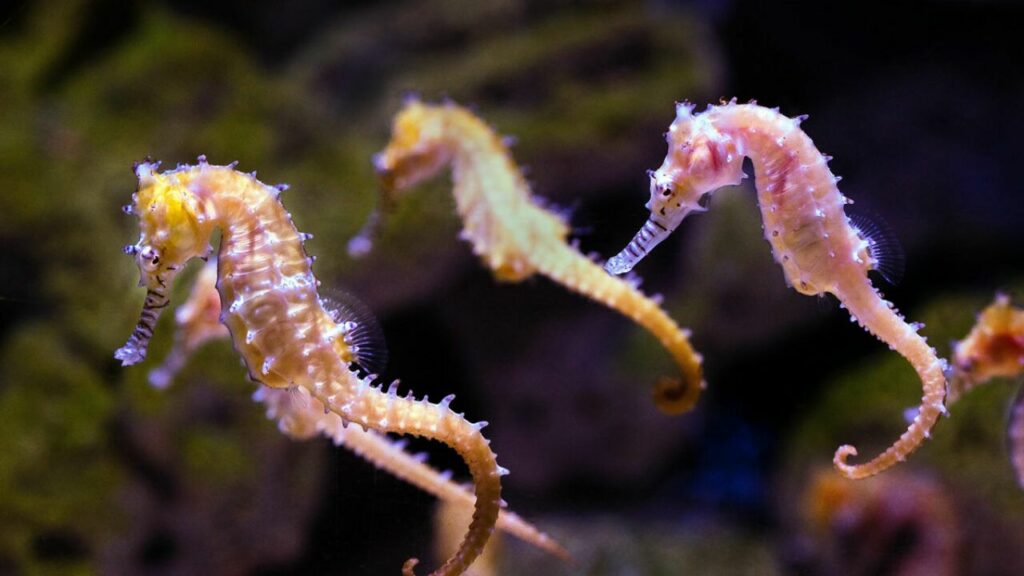
Female long-snouted seahorses typically have a wider range of activity than males. This may be because males have a pouch for carrying eggs, which makes them heavier and less mobile.
Reproduction Method
Long-snouted seahorses usually reach sexual maturity when they reach a length of about 7 to 8cm. Like all seahorse species, long-snouted seahorses have an interesting reproductive characteristic.
Similar to other seahorse species, this type of seahorse usually lays eggs. Male seahorses have a pouch on their belly to receive eggs laid by female seahorses, which is why many people mistake them for females.
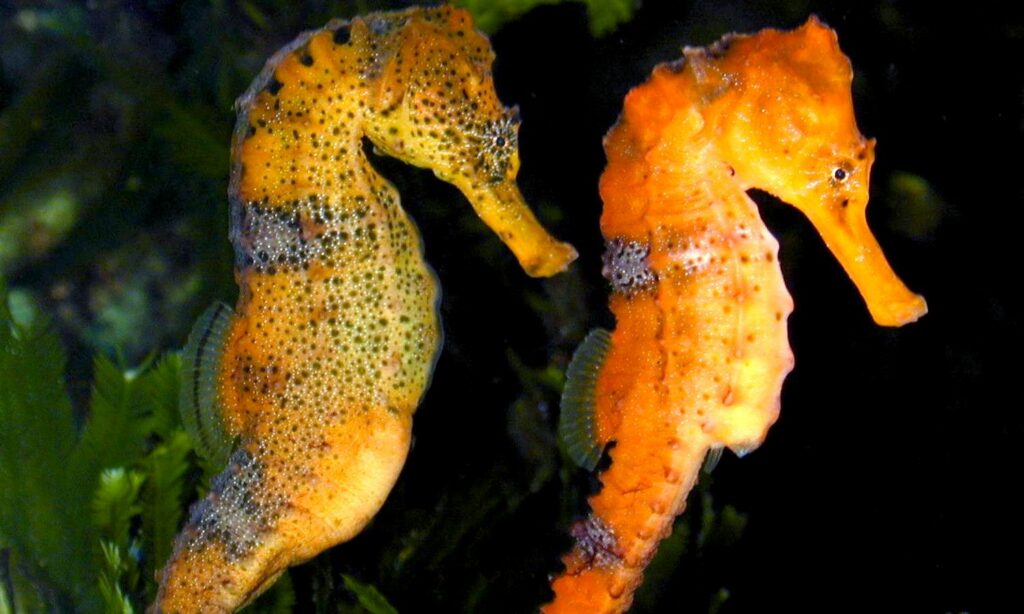
This species is known to have a dramatic courtship ritual, in which the male has the ability to change color and puff up its egg pouch while the female swims around, performing a dance around the male.
After their courtship ritual, the female long-snouted seahorse will deposit her eggs into the male’s specialized pouch, and then the male will incubate the eggs until they hatch. On average, there can be up to 1,600 eggs with a diameter of about 1.2mm (0.05 inches). It takes about two weeks for the seahorse eggs to hatch, and the average length of the newborn long-snouted seahorse is about 5.14mm (0.2 inches). The newborn long-snouted seahorses look like miniature versions of their parents.
When a pair of long-snouted seahorses are raised in a suitable fish tank and are well-cared for and fed a proper diet, they can reproduce all year round, and on average, they give birth to a new brood every two weeks.
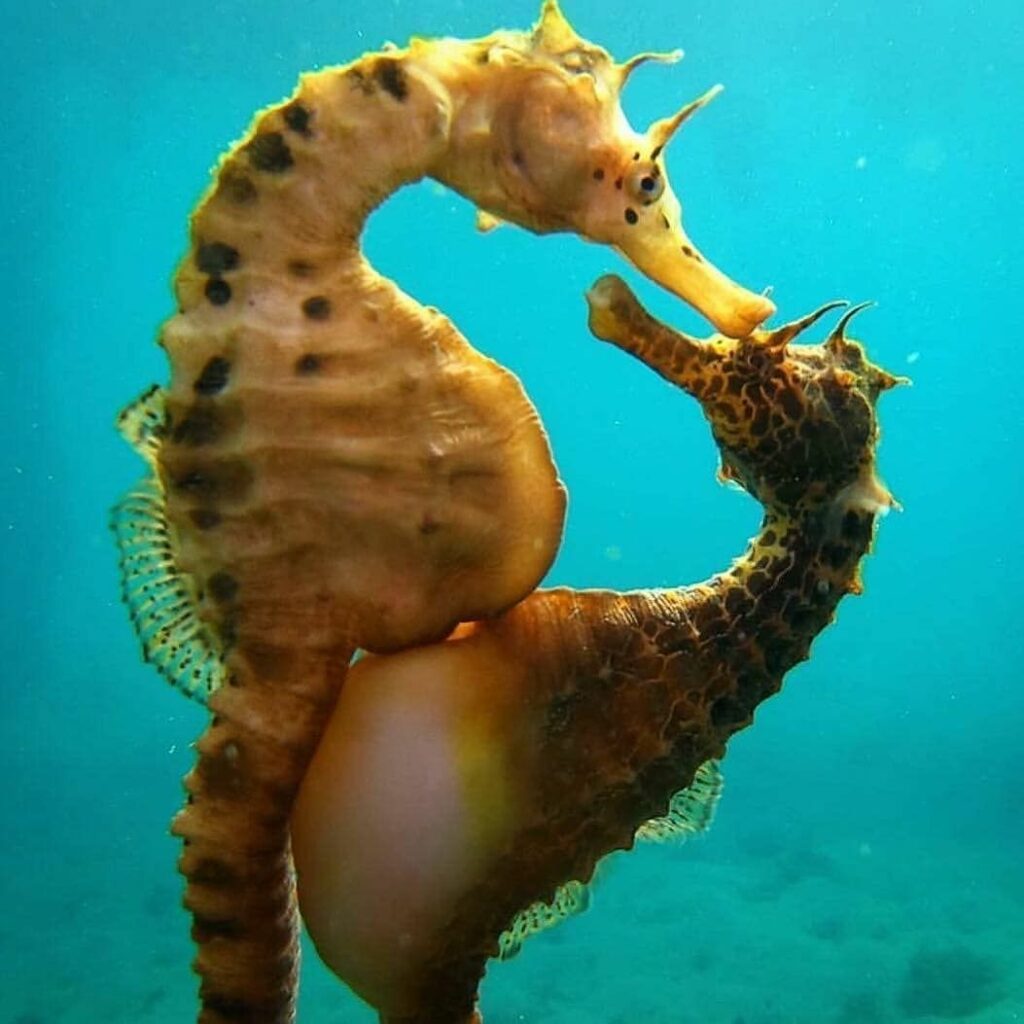
How do humans use Long-snouted seahorses?
Long-snouted seahorses are harvested by humans for several main purposes such as:
- Using as ornamental fish.
- Using as souvenirs.
- Using as medicine.
- Some other religious purposes.
Long-snouted seahorses are caught and harvested more and more, and they are currently listed on the International Union for Conservation of Nature (IUCN) list of threatened species.
Although there is not enough data to determine the population trend of long-snouted seahorses, it can be seen that most long-snouted seahorse species, including long-snouted seahorses, are easily caught in large numbers.
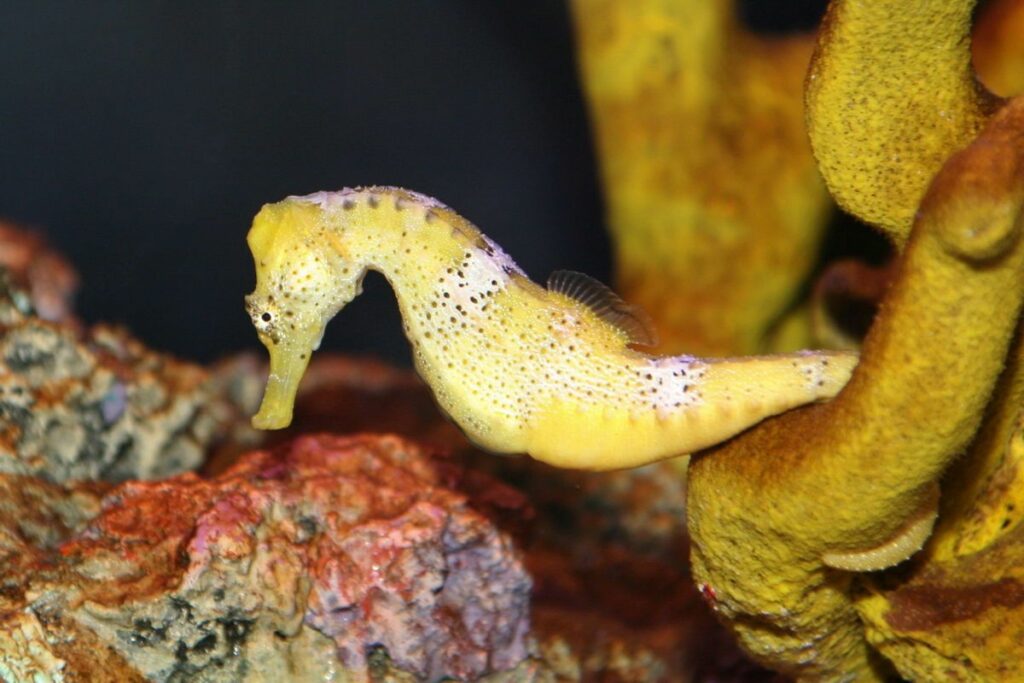
Long-snouted seahorses are easy to catch for use as ornamental fish in aquariums, or to be dried and sold to tourists. They can also be transported to some Asian countries for use as medicine in traditional medicine.
Currently, scientists continue to research long-snouted seahorses to determine whether their populations remain stable or not, in order to develop appropriate conservation measures for this species.
Food of the Long-snouted Seahorse
The main food of the Long-snouted Seahorse consists of:
- Small crustaceans.
- Plankton.
- Plants.
Long-snouted Seahorses usually search for food during the day and rest when night falls. They often cling to underwater structures such as seaweed or roots of mangrove trees to rest.
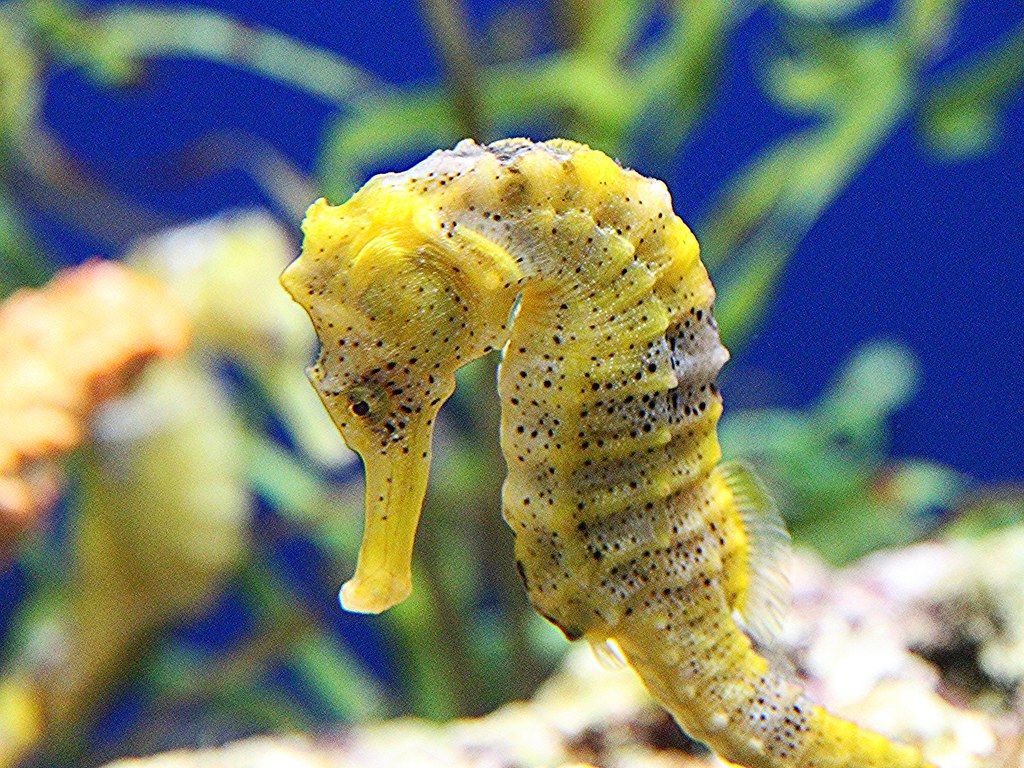
Long-snouted Seahorses usually use their long snouts like a straw to suck up food as they pass by. This fish species eats very slowly, so if you want to keep them, it’s best not to make them compete for food with other fish in the tank.
Long-snouted Seahorses need to be provided with a nutritious and diverse diet. When feeding them, it is best to divide their food into multiple small portions throughout the day instead of just feeding them one or two large meals.
Taking care of Long-snouted Seahorses
Long-snouted Seahorses are peaceful animals and are considered safe for coral reefs. They usually travel in pairs, so when keeping them, it’s best to keep them in pairs. If the tank is large enough, you can keep multiple pairs together.
Pairs of Long-snouted Seahorses usually live in harmony with small and friendly fish species. It’s not suitable to keep Long-snouted Seahorses with other aggressive fish species or fish that they have to compete with for food.
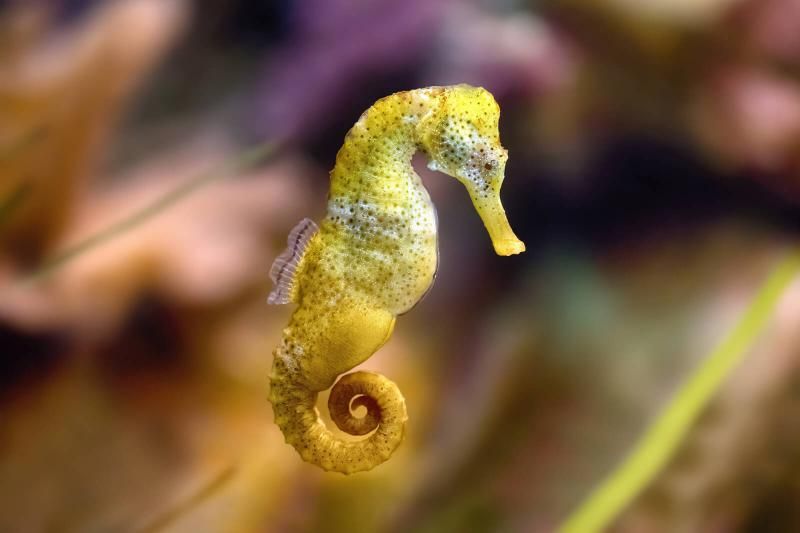
It’s not recommended to keep Long-snouted Seahorses in a tank smaller than 115 liters because they are an upright species, so the height of the tank is extremely important. The recommended tank size for Long-snouted Seahorses is at least 40cm tall, and the taller the tank, the better.
The recommended water temperature for Long-snouted Seahorses is 22-25.5º C. The specific gravity of the tank should be kept around 1.020-1.025, and the pH value should be between 8.1 and 8.4.
In summary, the above article has summarized detailed information about Long-snouted Seahorses. We hope it provides readers with useful information about this special wild ornamental fish species.
